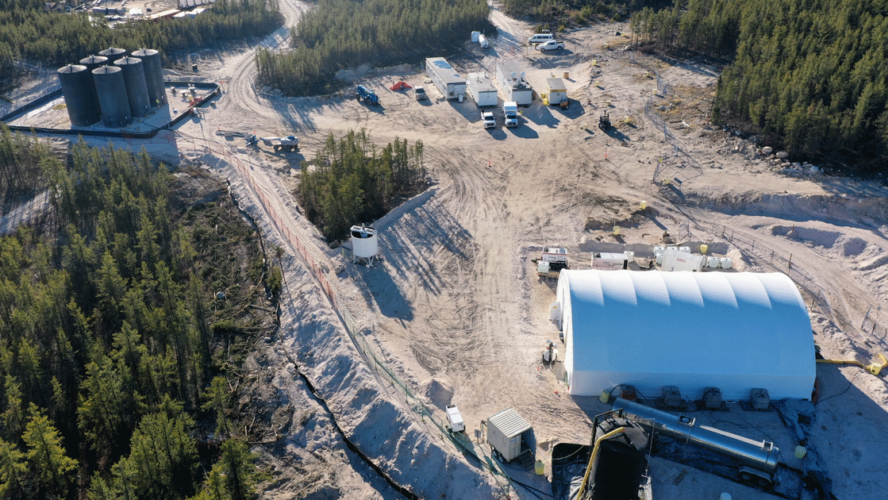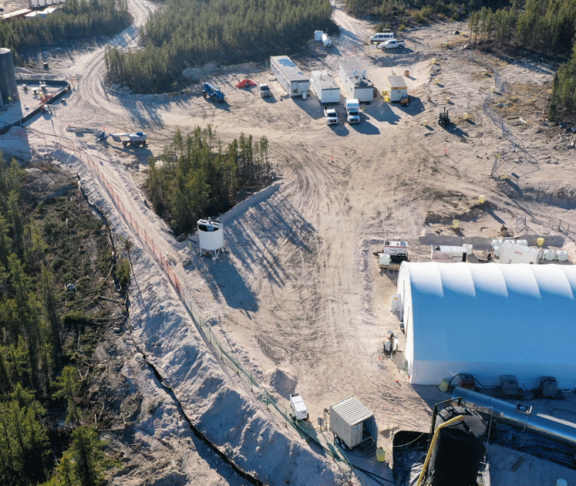
David Cates
President & CEO, Denison Mines
While nuclear technology is fast-evolving, nuclear plants remain dependent on fuel like uranium — but its mining isn’t as old-fashioned as you’d think.
As the nuclear renaissance blossoms in Canada and we begin planning for a future increasingly reliant on uranium for green and sustainable baseload power, great strides are being taken to modernize — and lower the environmental footprint of — the mining projects that make that power possible.
Canada has long been known worldwide not only as a leader in nuclear technology innovation, but also as home to some of the richest uranium deposits in the world. At the Wheeler River property in Saskatchewan’s Athabasca Basin, Denison Mines is now bringing the Canadian legacy of innovation to the mines themselves, beginning with its Phoenix project. And it’s hoping to change minds in the process.
“Mining has been programmed into many people’s minds as a bad thing,” says Denison President and CEO David Cates. “Perspectives are changing, however. The truth is, even conventional uranium mining in Canada is very safe and responsible. Now, with in-situ recovery (ISR) technology, we believe we can achieve a superior standard of sustainability – with a very small surface footprint and no open pits or underground mine workings.”
Mining without the mine: from theory to reality
The technology behind ISR mining sounds like it is straight out of science fiction. It involves drilling a series of boreholes (each similar to a water well) into the uranium deposit located hundreds of metres below the surface, and then saturating the sandstone host rock with an engineered mining solution that dissolves the uranium as it flows from well to well. The solution is injected down one borehole and — once it’s rich with uranium — pumped back up another, where the uranium is then extracted from it in a processing facility on the surface. The flow of the mining solution is controlled by pumps and valves on surface and a perimeter “freeze wall” is used to provide tertiary environmental protection using a proven technique in the mining industry that is normally designed to keep water out of underground mines.
Now, with in-situ recovery (ISR) technology, we believe we can achieve a superior standard of sustainability — with a very small surface footprint and no open pits or underground mine workings.
“We had a good basis to believe this would work from raw data and preliminary lab results when we first announced this approach in 2018,” says Cates. “After several years of successful field and laboratory tests, we have now proven that the ISR mining method can work in the Athabasca Basin with the completion of an in-ground pilot test that was permitted and operated at Phoenix in 2022. During that test, we took the mining solution — which we designed in the lab — and put it to work in the ground confirm our models of how the uranium would dissolve and the fluids would flow. It couldn’t have been a greater success. We recovered uranium at a similar rate to what we had modelled and we were able to reclaim the water in the ground back to environmentally acceptable levels afterwards.”
A Canadian first
This pilot test, which Denison calls a Feasibility Field Test, marked the first time the ISR mining method has been deployed for uranium mining in Canada. And, when the full Phoenix operation is built out — with a projected completion date of 2027 — it will be the country’s first uranium mine based on this low-impact mining method. While ISR mining for uranium is new to Canada, it is already a well-established mining method for uranium globally, representing approximately half of the world’s current uranium production. The main difference between what Denison is doing and ISR uranium mining happening elsewhere in the world is the grade of the uranium deposits. Globally, ISR uranium mining is typically used for low-grade uranium deposits (0.05% U3O8), whereas Denison’s Phoenix deposit averages over 11% U3O8 with most of the deposit at 46% U3O8.
In parallel with moving Phoenix forward, Denison is also exploring other potentially ISR amenable projects in northern Saskatchewan. Already, the company is fielding offers from international mining companies to collaborate and share their expertise.
Denison is also leading the Canadian marketplace with the adoption of a corporate Indigenous Peoples Policy, which was approved by Denison’s Board of Directors in 2021 and guides Denison’s corporate decisions with an aim to participate in economic reconciliation with Indigenous peoples with ties to the areas in which Denison operates. “Our Indigenous Peoples Policy has led Denison to enter into a series of foundational agreements with various Indigenous groups that include mutually agreed frameworks for information sharing and consultation, employment, business opportunities, and benefits sharing, even before we have an operating mine,” says Cates.
With the ISR mining method now successfully de-risked, Denison is looking forward to moving its Phoenix project forward and leading the way in bringing Canadian uranium mining into a new sustainable future.
Historically, when we’ve said that nuclear power is the most environmentally sound path to green baseload capacity, someone has inevitably asked: “Even the uranium mines?” Now, more than ever before, we can confidently answer: “Yes.”
Discover the future of uranium mining at redefiningmining.ca and denisonmines.com.




